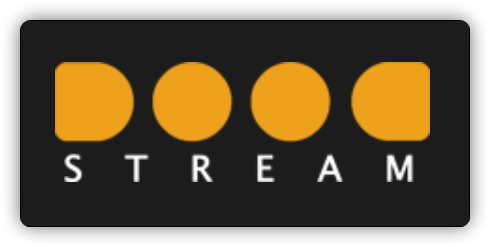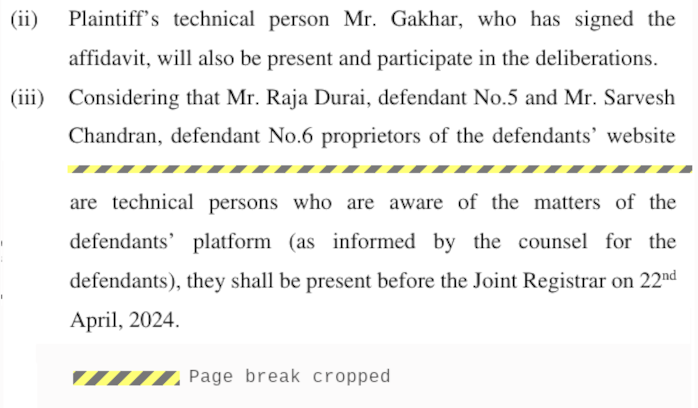 The USTR’s ‘notorious markets’ report is one of the more powerful tools available to rightsholders aiming to tackle infringement orchestrated from overseas.
The USTR’s ‘notorious markets’ report is one of the more powerful tools available to rightsholders aiming to tackle infringement orchestrated from overseas.
When Hollywood first submitted cyberlocker platform DoodStream for consideration in 2022, its framing was not dissimilar to that used to shape perceptions of Megaupload. Front and center, a cash incentive scheme that rewards DoodStream’s users based on the popularity of ‘their’ videos.
Based on broadly the same copyright infringement-related allegations, a Paris court ordered French ISPs to block DoodStream in 2023. Late last year, the MPA’s Global General Counsel, Karyn Temple, personally informed a House Judiciary Subcommittee of the threat posed by DoodStream. That wasn’t intended to be taken lightly.
Major Hollywood Studios, Netflix, Amazon, and Apple, Sue DoodStream
In March this year, Hollywood’s movie and TV show giants filed a copyright infringement lawsuit against India-based DoodStream at the Delhi High Court
A total of six defendants included the domains doodstream.com, doodstream.co, dood.stream and their underlying websites (defendants 1-3), plus a server (defendant 4) used by defendants 1 to 3, to allegedly facilitate storing and dissemination of infringing content. Defendants 5 and 6, neither of whom were identified in initial public court records, were described as the site’s operators.
Our March report offers more detail but, in short, takedown notices filed at DoodStream were ineffective. When content was taken down, a system was in place to automatically generate a new working link. On that basis, and many more, the plaintiffs demanded total blocking of DoodStream or the imposition of new management to take over the site.
DoodStream Somehow Makes a Counter-Offer
After DoodStream promised to “exhaustively and completely” remove the plaintiffs’ content, and disable the system that renders takedowns pointless, the Delhi High Court’s March 18 order compelled DoodStream to remove all content owned by the plaintiffs within 24 hours. The site’s operators were further ordered to hire an accountant to disclose all revenue generated by the site, although that would be allowed more time.
In the U.S. and Europe, the short window available to comply with the takedown requirements of the injunction would mean taking the site offline until the content had been removed. Alternatively, face being held in contempt of court.
In documents filed at the High Court dated April 5, the plaintiffs reported non-compliance with the injunction. Not only was the infringing content still available on DoodStream, the link generating system was still in place too, violating the court’s orders.
In documents filed at the High Court dated April 7, counsel for the defendants stated that, contrary to the plaintiffs’ claims, DoodStream had complied with the terms of the injunction and had “placed on record certain technical aspects relating to the allegations of the plaintiffs.”
Settling Differences of Opinion
Faced with apparently conflicting statements, the Court decided that the “technical aspects” referenced by the defendants needed to be understood. Handing the task to the Joint Registrar, to be assisted by the Director and Joint Director of the Delhi High Court’s IT department, they would understand the technicalities together.
“This may require the plaintiffs and the defendants to show the [infringing] content on [DoodStream] to the Joint Registrar (and the IT Team),” the Court explained.
While the idea of ordering the parties to conduct searches for pirated content in court seemed a little unconventional, the Court noted that the plaintiffs’ technical advisor would be in attendance to assist.
For the defense, the technical representatives would be the actual operators of DoodStream, defendants No.5 and No.6 in the complaint. Or, as the court referred to them, the site’s ‘proprietors’, who were named in public court documents for the first time. To some in the Indian tech startup space, the names may look familiar.
In an order dated April 22, the Court provided a progress update on events thus far.
IT Department, Counsel for Plaintiffs and Defendants, Report Back
In their report to the Court, “counsel for the plaintiff presented an elaborate list of around 1512 links which are still operative thus illegally leaking the copyrighted content of the plaintiff, despite the directions dated 18.03.2024.”
The Court notes that the list was emailed to the director of the IT department, where a selection of “random links” were tested to see if they were live on DoodStream. The Court randomly tested six links and found that all, except one, were still live.
Counsel for the defendants explained these links “were left out since more than 5 lakhs links [500,000] were shared initially [by the plaintiffs for deletion] and they [DoodStream] are trying their level best to comply with the list.”
With the Court noting that the defendants must block all links supplied in future lists, the next update would be issued on April 25 – just 72 hours later.
Progress At Last?
The Court’s order dated April 25 contained positive news. Both parties agreed that all links that needed to be blocked, had indeed been blocked. Further positive news was reported in respect of the link generator tool.
It was disabled early April, although there was disagreement on the date. The defendants said it couldn’t have been disabled any sooner “due to logistic and technical aspects” including “the cache memory and Cloudflare CDN.”
Less positive news concerned the revenue accounting exercise ordered by the Court, which still hadn’t been carried out. Meanwhile, the studios suggested some additional changes to curb infringement.
Publish Users’ Names Next to Their Uploads
Counsel for the studios said that DoodStream should modify its code so that the names of users are published next to their uploads. DoodStream said that the proposal would be discussed with the technical team, as if coding was somehow the biggest barrier to implementing such a feature. Still, the studios had plenty of ideas where that came from.
Since download links, embedded links, and embed codes facilitate sharing of content with others, disabling these features “would put a plug on the sharing of infringing content.” Or perhaps a suggestion from the Court’s IT department might be better received; DoodStream should start imitating YouTube.
“They have stated that the ‘YouTube’ usually reviews the entire uploaded content in the background with the help of both the manual as well as the technical intervention whereby once the copyrighted content is identified, the uploader is informed to either take down the content immediately or its account would be blocked forever,” the Court added.
In the Court’s opinion, this would be the “perfect model to be replicated in the present circumstances.” Whether those circumstances included a feasibility study wasn’t made clear, but it probably wouldn’t have mattered. Much as the 24-hour deadline was brushed aside, other conditions appeared open for negotiation too.
Lawsuit or Business Meeting? And Who’s in Charge?
In its order dated May 1, the Court provides an update on DoodStream’s responses to the requests made earlier by the most powerful movie and TV show studios in the world.
Unfortunately, having considered the proposal to remove the ‘Download Link, embed link, embed code’ options, DoodStream concluded that removal wasn’t necessary.
“Counsel for the [defendants] states that they would not be removing these features since, as per their understanding, none of those encourages re-uploading. The counsel for the plaintiff counters this submission by stating that these features do result in the dissemination of their copyrighted content.
“Be that as it may,” the Court added, “the [defendants] have expressed their inability to remove these features.”
The proposal to put the names of DoodStream users next to their uploads, “whereby the infringer(s) can be identified and prosecuted” by the studios, wasn’t popular either.
“The counsel for the [defendants] states that such details cannot be provided, due to the lack of infrastructure and technical feasibility,” the Court’s assessment reads.
And Just Like That, No Consensus on Anything
In its order dated May 13, the Court considers DoodStream’s general compliance with the injunction issued March 18, weighing input from the studios and the defendants.
The plaintiffs describe a climate of “serious non-compliance” alongside DoodStream’s refusal to remove all shareable links. Counsel said that “about 10 lakh” [~1 million] links had been communicated to the site for removal but “the architecture of the site consciously supports the preservation of the infringing content on Doodstream despite takedowns.”
The site also pays infringers when videos they upload are viewed by others.
Counsel for the defendants argues that DoodStream has always been compliant, even before the lawsuit, taking down or deleting content in response to complaints. Part of the problem since the lawsuit began is that plaintiffs kept sending takedowns in PDF format, and that meant they couldn’t be complied with.
While it was confirmed that steps had been taken to implement an upload filter to protect “various” copyright holders, there was a more fundamental problem. The venue for suing DoodStream should not have been India, counsel explained.
“While the defendants are based in Coimbatore, the hosting platform is in United States of America and therefore, the plaintiff have no reason to approach this Court in the first place.”
As for the proposed culling of download links, that wasn’t going to happen.
“Removing the tabs of ‘download link’, ’embed link’, and ’embed code’ by the defendants would end up in the website being completely bare and inept,” DoodStream added.
The High Court’s brutal assessment on compliance, and what that could mean for DoodStream’s future, will appear here tomorrow
- SEO Powered Content & PR Distribution. Get Amplified Today.
- PlatoData.Network Vertical Generative Ai. Empower Yourself. Access Here.
- PlatoAiStream. Web3 Intelligence. Knowledge Amplified. Access Here.
- PlatoESG. Carbon, CleanTech, Energy, Environment, Solar, Waste Management. Access Here.
- PlatoHealth. Biotech and Clinical Trials Intelligence. Access Here.
- Source: https://torrentfreak.com/doodstreams-proprietors-struggle-to-comply-with-hollywood-injunction-240607/




